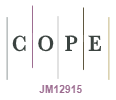RESEARCH ARTICLE (Open Access)
Communicating with the public about the risks of naturally occurring asbestos
Claire Hooker A * , Adam Capon B and Isabel Hess B
+ Author Affiliations
- Author Affiliations
A Sydney Health Ethics, University of Sydney, NSW, Australia
B Health Risk and Regulation Unit, Health Protection NSW, NSW Health, Sydney, Australia
Public Health Research and Practice 27, e2751747 https://doi.org/10.17061/phrp2751747
Published: 7 December 2017
Abstract
Objectives:To explore the application of evidence based risk communication to community messaging about naturally occurring asbestos (NOA). Type of program or service: Risk communication education about NOA. Methods: We apply principles and determinants of risk communication to the topic of NOA. Results: We emphasise the importance of erring on the side of transparency and trust, even when officials may be concerned about inadvertently heightening needless public concern. We offer a range of practical suggestions for how to lower public concern and outrage relating to the issue of NOA when it arises in local contexts. Lessons learnt: Public concern and outrage can be reduced by favouring early and frequent communication, awareness and use of the ‘rule of threes‘ in media communication, open acknowledgement of uncertainty, prioritising response to community concern above narrow myth-busting strategies, and supporting community action.


